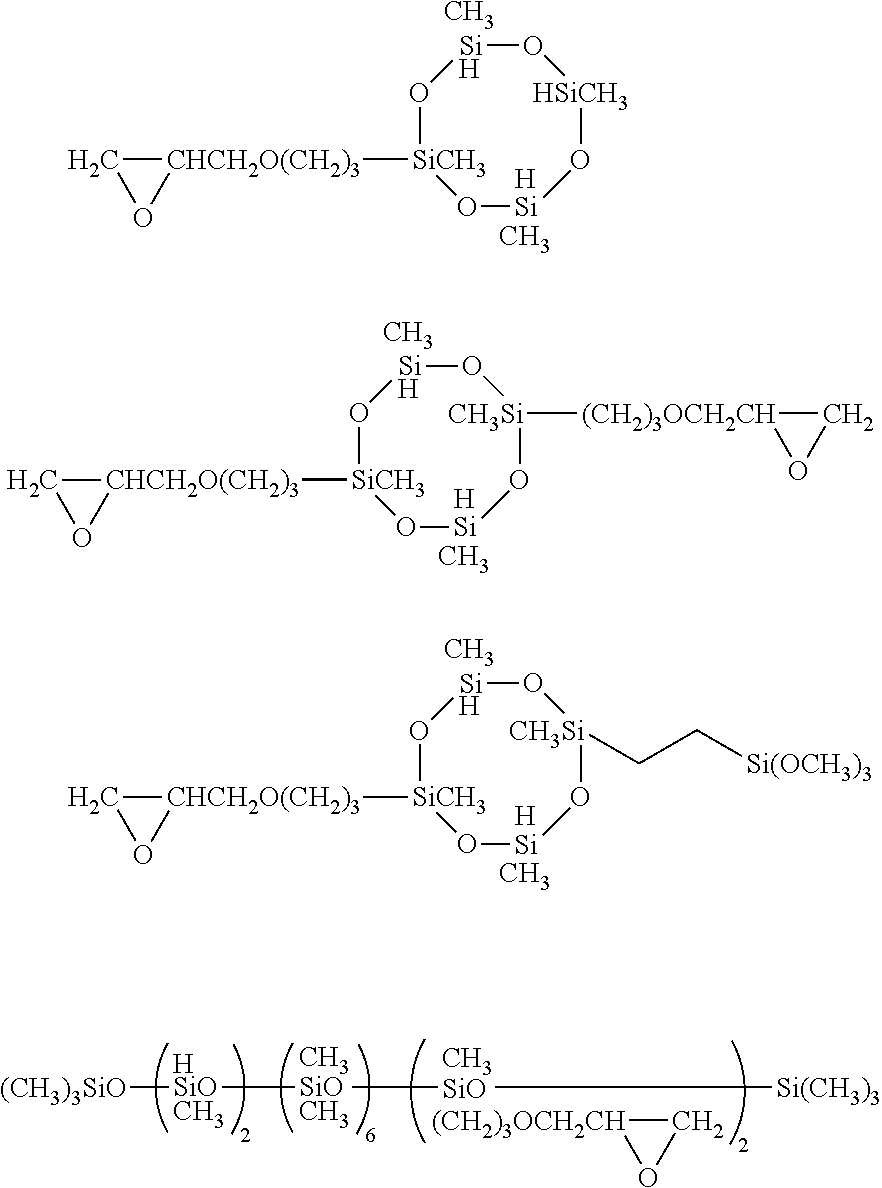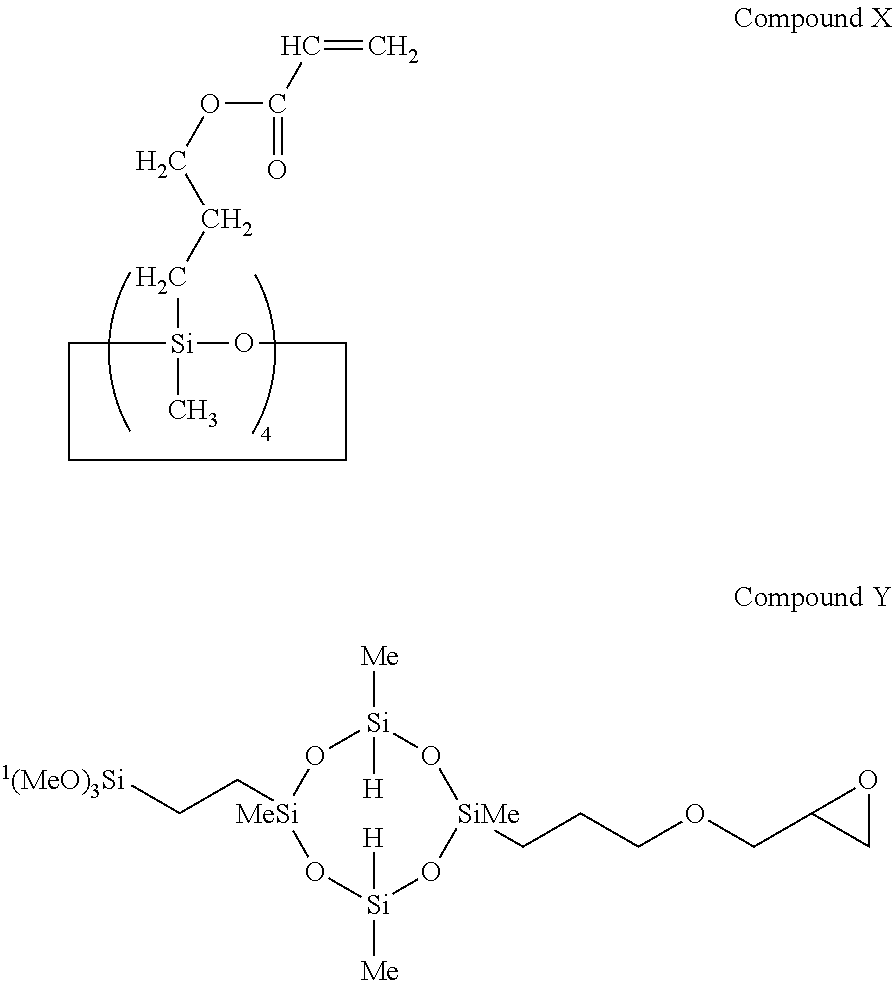Silicone resin composition for solar cell module, and solar cell module
- Summary
- Abstract
- Description
- Claims
- Application Information
AI Technical Summary
Benefits of technology
Problems solved by technology
Method used
Image
Examples
Example
Preparation of Silicone Resin Composition 1
[0079]100 g of a solid composition of the following average composition (1′) for use as Component (A) of the present invention obtained by co-hydrolysis of phenyltrichlorosilane, diphenyldichlorosilane, and methylvinyldichlorosilane was mixed with 50 g of a silicone oil of the following average composition (2′) for use as Component (B) of the present invention, giving Silicone Solution 1 having a viscosity at 25° C. of 1,500 mPa·s. The molar ratio of the Si—H groups in Component (B) relative to the alkenyl groups in Component (A) is 0.9.
[(CH3)(CH2═CH)SiO]6.5[(C6H5)2SiO]2.5[(C6H5)SiO3 / 2]7 (1′)
[(CH3)3SiO1 / 2]2[(C6H5)2SiO]2[(CH3)HSiO]2 (2′)
[0080]To the thus-prepared 100 g of Silicone Solution 1 was added 0.5 g of a dimethyldiphenylsilicone oil solution of chloroplatinic acid (platinum content: 1%) for use as Component (C), followed by the addition of 1 g of Compound X represented by the formula shown below for use as Component (D), and 2 g of...
Example
Preparation of Silicone Resin Composition 2
[0081]To the 100 g of Silicone Solution 1 used in Preparation Example 1 was added 0.5 g of a dimethyldiphenylsilicone oil solution of chloroplatinic acid (platinum content: 1%) for use as Component (C), followed by the addition of 1 g of γ-methacryloxypropyltrimethoxysilane for use as Component (D), and 2 g of Compound Y above for use as Component (E), giving Silicone Resin Composition 2.
Example
Preparation Example 3
Preparation of Silicone Resin Composition 3
[0082]To the 100 g of Silicone Solution 1 used in Preparation Example 1, 25 g of a silicone oil represented by average composition formula (3′) shown below for use as Component (F) was added, and 0.5 g of a dimethyldiphenylsilicone oil solution of chloroplatinic acid (platinum content: 1%) for use as Component (C) was added, followed by the addition of 1 g of γ-methacryloxypropyltrimethoxysilane for use as Component (D), and 2 g of Compound Y above for use as Component (E), giving Silicone Resin Composition 3.
CH2═CH(CH3)2Si[(CH3)2SiO]20[(C6H5)2SiO]10Si(CH3)2CH═CH2 (3′)
PUM
| Property | Measurement | Unit |
|---|---|---|
| Temperature | aaaaa | aaaaa |
| Viscosity | aaaaa | aaaaa |
| Viscosity | aaaaa | aaaaa |
Abstract
Description
Claims
Application Information
 Login to view more
Login to view more - R&D Engineer
- R&D Manager
- IP Professional
- Industry Leading Data Capabilities
- Powerful AI technology
- Patent DNA Extraction
Browse by: Latest US Patents, China's latest patents, Technical Efficacy Thesaurus, Application Domain, Technology Topic.
© 2024 PatSnap. All rights reserved.Legal|Privacy policy|Modern Slavery Act Transparency Statement|Sitemap


